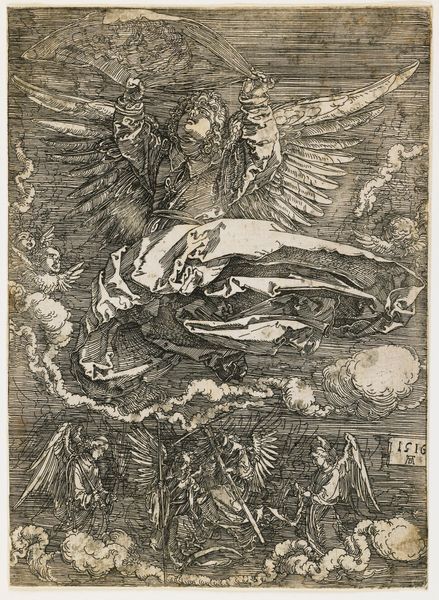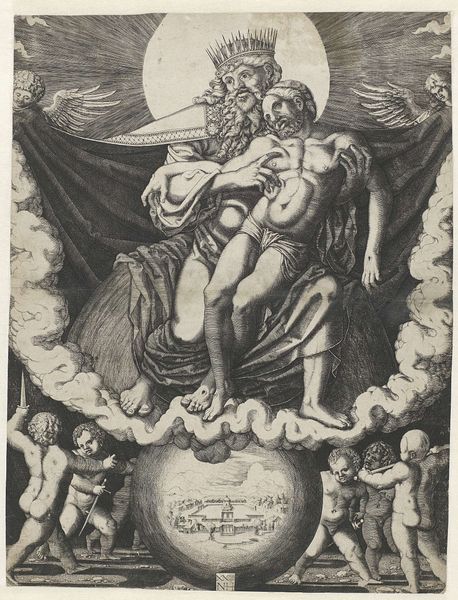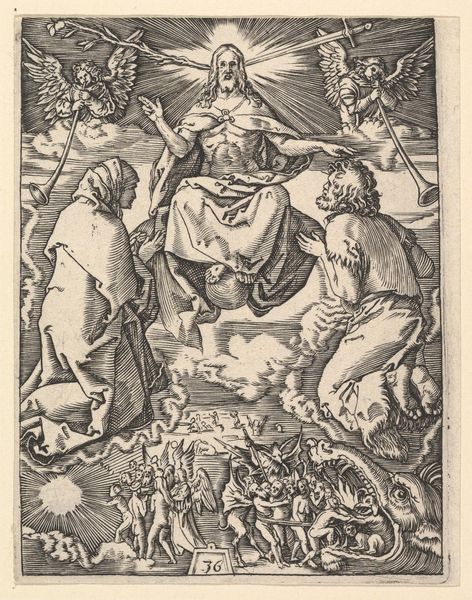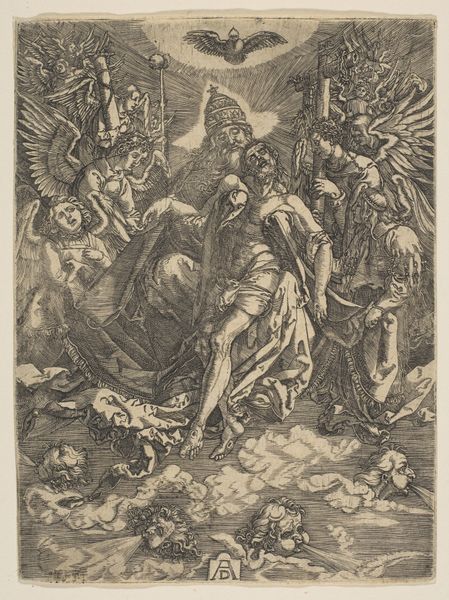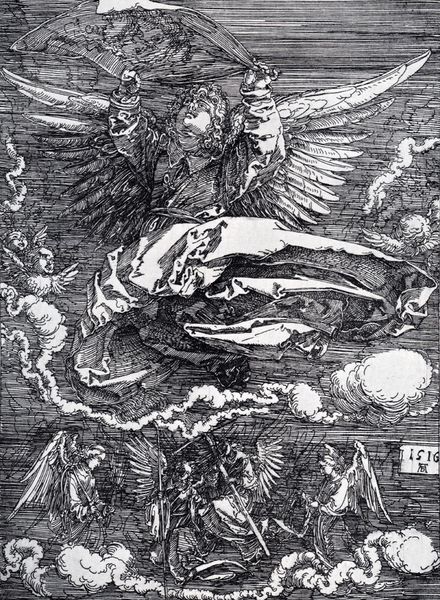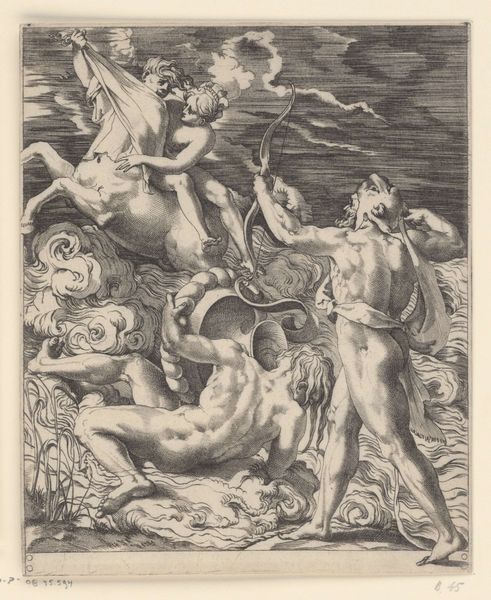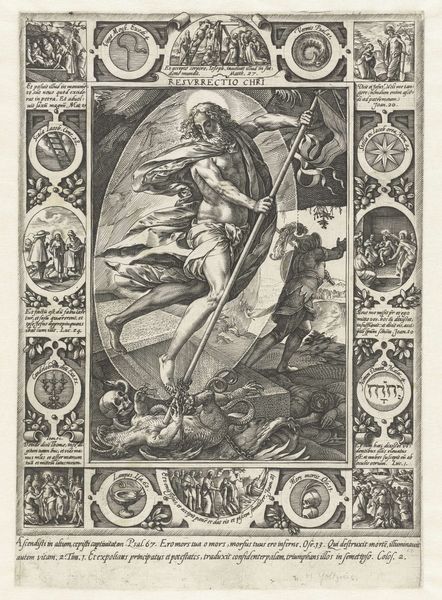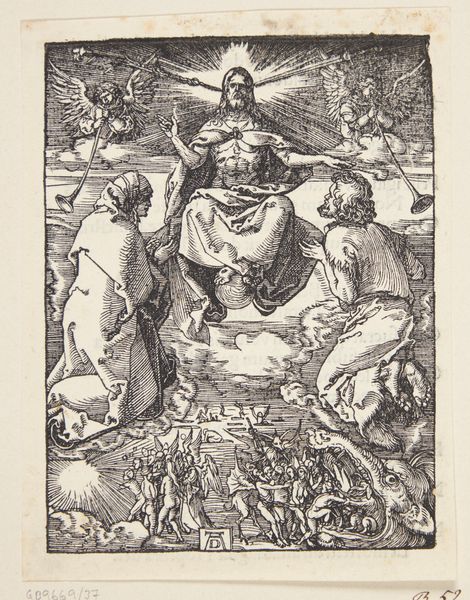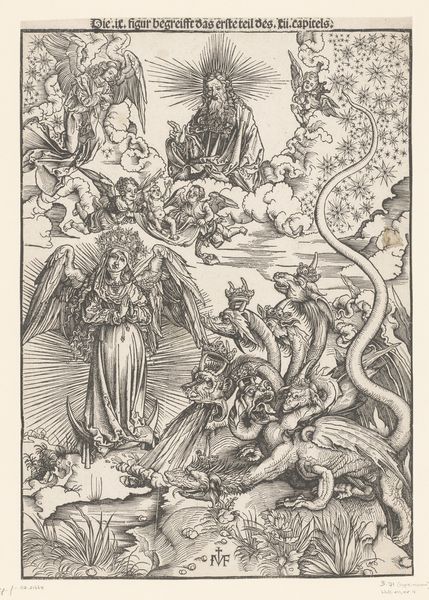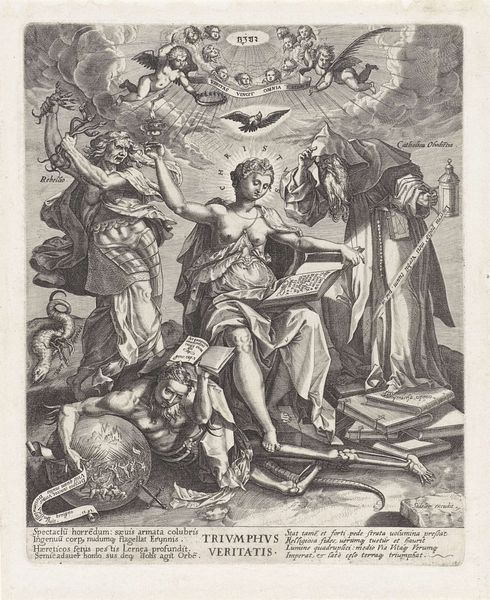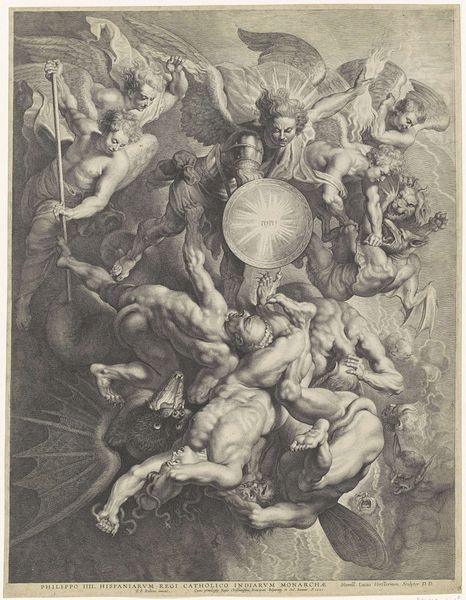
print, engraving
#
ink drawing
#
pen drawing
# print
#
pen illustration
#
pen sketch
#
figuration
#
line
#
northern-renaissance
#
engraving
Dimensions: height 185 mm, width 134 mm
Copyright: Rijks Museum: Open Domain
Curator: Albrecht Dürer's "Angels with the Sudarium and Instruments of the Passion," an engraving created in 1516 and housed here at the Rijksmuseum, is our focus today. Editor: My first impression is this feeling of both grandeur and unease. All that meticulously etched detail, like swirling smoke and bristling feathers, renders it somewhat feverish and intense. What stands out for you? Curator: Its historical resonance is captivating. Dürer produced this work during a pivotal era grappling with religious reform and anxieties surrounding faith. It functions as a meditation on suffering, power, and perhaps doubt. Editor: Absolutely. I get this sense of theatre, almost staged. Look at how that large veil or sudarium, held by the central angel, divides the composition. Like a symbolic curtain call over earthly pain and into, well, something less clear! The 'instruments of passion' displayed by supporting angels – are those, maybe, the performance props? Curator: Yes, absolutely, and framing them within the sociopolitical landscape is crucial. Consider the work within the context of the burgeoning Reformation and the questioning of established religious authority. These angels act as visual rhetoric. Dürer gives material form to abstract theology during a period of ideological conflict. Editor: I think that reading certainly resonates with my earlier “unease”. But at the same time I see this visual harmony! Dürer somehow manages to transform instruments of torture, a spear, and a thorny crown, into emblems almost, if not celebratory, then triumphant in their stoicism. He reclaims those narratives of human fallibility by representing an elevated form above—through his impressive art. Curator: And Dürer, by grounding it in this specific historical turmoil, elevates it. The artwork operates as both an devotional object and an intellectual statement—the suffering that’s historically occurred allows for an understanding of current injustices and social hierarchies. It bridges past agony with contemporary concerns about inequality. Editor: A dark sort of inspiration, if you will. Almost… metal, actually. Anyway, seeing this, I suddenly want to sketch in my own little notebook now—create my own engravings that speak to present agonies but perhaps are lifted from daily newspapers now! Curator: Precisely. The enduring appeal lies in how its themes translate—enduring as the printmaking endures and influences artists generationally, it has something relevant to say to each of us, doesn't it? Editor: Yes, there’s power here beyond just religious narrative. Something universal.
Comments
No comments
Be the first to comment and join the conversation on the ultimate creative platform.
